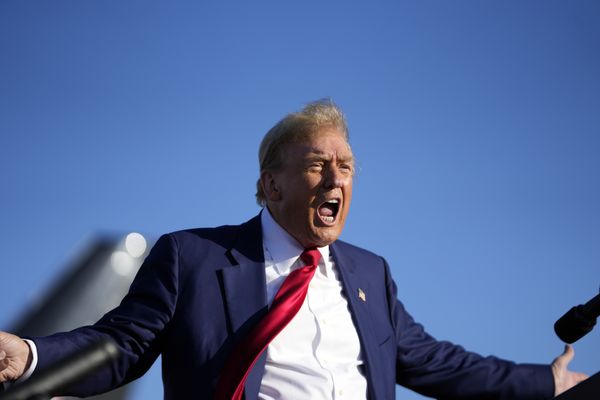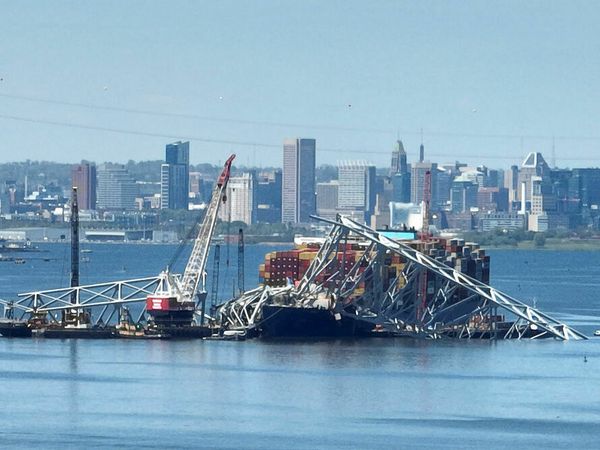
The Reserve Bank is under more scrutiny than at any time in the last three decades. Its recent interest rate hikes have seen governor Philip Lowe face critical media coverage, while the Albanese government will launch an independent review of the central bank’s performance within weeks.
But it isn’t just Lowe whose work should be scrutinised. The bank’s big decisions, such as whether to hike interest rates, are made by its nine-member board. Three of the members (the governor, deputy governor and treasury secretary) are bureaucrats, while the remaining six are appointed by the treasurer.
These are some of the most powerful policymakers in the country, yet their credentials are rarely scrutinised by the mainstream media. So, who are they?
Who is on the Reserve Bank board?
All six of the current non-executive members were appointed under the Turnbull or Morrison governments.
| Current members of the Reserve Bank Board | |
| Member | Current occupation |
| Chair: Philip Lowe | Reserve Bank governor |
| Deputy Chair: Michele Bullock | Reserve Bank deputy governor |
| Steven Kennedy | Secretary of the Australian Treasury |
| Mark Barnaba | Director of Fortescue Metals, HBF and various organisations, senior fellow at EY Oceania |
| Wendy Craik | Director of various organisations, on advisory committee of the CSIRO |
| Ian Harper | Dean and director of Melbourne Business School, director of Harper Associates and other organisations |
| Carolyn Hewson | Director of CSL and Infrastructure SA |
| Carol Schwartz | Founding chair of the Women’s Leadership Institute Australia, director of various organisations |
| Alison Watkins | Chancellor of the University of Tasmania, director of CSL, Wesfarmers and other organisations |
Two members — Mark Barnaba and Alison Watkins — concurrently sit on the board of the Centre for Independent Studies (CIS), a centre-right think tank, while another — Ian Harper — sits alongside Peta Credlin on the board of the controversial, Liberal-aligned Robert Menzies Institute. Two members are current or former directors of fossil fuel companies, while others formerly held leadership roles at the the National Farmers Federation (Wendy Craik, as executive director) and Property Council (Carol Schwartz, as president).
There is no doubt they all have accomplished CVs. None of these “interlocking directorships” are necessarily improper or conflictual — though Ian Harper was forced to disassociate himself from a Liberal fundraising forum while heading up the Abbott government’s competition review.
The Coalition have long used government appointment powers to engineer cultural change at public institutions — see the ABC and SBS.
It’s also not clear whether these members’ more conservative connections were formative or merely reflective of the RBA’s existing culture. Lowe, for instance, has admitted the RBA donated $20,000 per year to the CIS and the conservative Sydney Institute since 2006, but has not donated to centrist or left-leaning think tanks.
(In its 2021 annual report, however, the RBA wrote it had undertaken a review of these memberships to ensure entities were “independent and not aligned with a political party or some other institution”. Yet following this review, the Bank renewed its membership of the Centre for Independent Studies, the Committee for Economic Development of Australia (CEDA), the Ethics Alliance and the Lowy Institute for International Policy, and became a member of the Labor-aligned McKell Institute.)
But since the Liberals’ electoral wipeout, many of these board members now represent an ideological minority and stand out of step with the Albanese government’s professed values. The question remains whether Treasurer Jim Chalmers will reshape the RBA board closer to his political image, like his predecessors did.
How have they performed in recent years?
Political stripes aside, the upcoming independent review will examine how well these members have performed. Luckily, new research out this month by economist Zac Gross and Assistant Treasurer Andrew Leigh tackles that question.
Their answer: the RBA hasn’t performed terribly, but it could’ve done much better.
Gross and Leigh find that the RBA did a good job keeping the economy out of recession during turbulent periods in 2001 and 2000. But they kept the cash rate too high in the four years before COVID hit, costing an estimated 270,000 jobs — for comparison, Gross claims shutting the nation’s entire coal mining sector tomorrow would directly cost just 38,100 jobs.
While the RBA likes to appear technocratic and value-neutral, their decision to undercook the economy pre-COVID was invariably political — indeed, some argue it was influenced by then-treasurer Scott Morrison’s agreement with the bank to prioritise “financial stability”. They shielded the richest from fortune-shaving inflation at the expense of workers, whose job opportunities were limited in a slower growing economy.
Bringing labour on board
Here’s a left-field idea which the upcoming review of the RBA should consider (but probably won’t) — putting a representative of Australian workers on the bank’s board. Having suffered most from the bank’s blind spots, injecting a voice for labour into boardroom discussions could help rebalance their current conservative, pro-capital bias and reprioritise its commitment to full employment.
Replacing outgoing members with people representing more diverse constituencies and perspectives than merely the top echelons of the business community is vital to ensure our central bank remains fit for purpose.
This might sound radical, but both Bob Hawke and Bill Kelty sat on the RBA board during their stints at the helm of the Australian Council of Trade Unions. The Fraser government even reappointed Hawke during a period of heightened industrial conflict.
Treasurer Jim Chalmers will have an opportunity to choose a new board member in August, when Mark Barnaba’s first term comes to an end. The Australian and the AFR would undoubtedly screech with terror, but if Chalmers were to truly follow in the footsteps of his idols Hawke and Keating, he’d appoint the ACTU’s secretary Sally McManus. Or perhaps its president Michele O’Neill — she even has financial experience, as she sits on the board of Australian Super. These picks would also keep the board majority female.
Over to you, Jim: do you have the courage to give workers a voice in the halls of monetary power?
Editor’s note: This story has been updated to include more detail of the RBA’s memberships based on its 2021 annual report)







